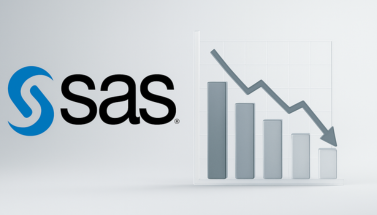
- by by Team Handson
- August 30, 2024
Industry-Grade Analysis of Clinical Trial Data Using Base SAS and Advanced SAS Techniques
1. Introduction
In the pharmaceutical industry, the analysis of clinical trial data is a critical task that ensures the safety and efficacy of new drugs. Regulatory bodies like the FDA and EMA require comprehensive and accurate analysis, making SAS the gold standard tool for data analysis and reporting in clinical trials. This project aims to replicate real-world scenarios by utilizing Base SAS and Advanced SAS techniques to analyze clinical trial datasets, produce industry-standard outputs, and derive actionable insights.
2. Objectives
- Primary Objective: To conduct a robust analysis of clinical trial data using industry-standard SAS methodologies, ensuring compliance with regulatory requirements.
- Secondary Objectives:
- Clean and preprocess clinical trial datasets to meet industry quality standards.
- Perform complex data manipulations and generate summary statistics using Base SAS and Advanced SAS.
- Create regulatory-compliant tables, listings, and figures (TLFs) that can be directly used in submission dossiers.
- Utilize SAS Macros to enhance efficiency and reproducibility, aligning with industry best practices.
3. Problem Statement
The pharmaceutical company has completed a Phase III clinical trial for a new drug. The challenge is to analyze the collected data to evaluate the drug’s safety and efficacy. The analysis must be performed following strict industry protocols, ensuring the outputs are suitable for submission to regulatory authorities. The project involves generating derived datasets, performing statistical analysis, and creating TLFs that conform to Clinical Data Interchange Standards Consortium (CDISC) standards.
4. Datasets and Variables
a. Demographics Dataset (`dm.sas7bdat`)
- Variables:
- `SUBJID` (Character, Length=10): Subject Identifier
- `AGE` (Numeric, Length=8): Age of the subject
- `SEX` (Character, Length=1): Gender of the subject (`M` for Male, `F` for Female)
- `RACE` (Character, Length=20): Race of the subject (e.g., `White`, `Black`, `Asian`)
- `ARM` (Character, Length=50): Treatment group (e.g., `Placebo`, `Drug A`, `Drug B`)
b. Adverse Events Dataset (`ae.sas7bdat`)
- Variables:
- `SUBJID` (Character, Length=10): Subject Identifier
- `AEDECOD` (Character, Length=50): Adverse Event Term (e.g., `Headache`, `Nausea`)
- `AEBODSYS` (Character, Length=50): Body System (e.g., `Gastrointestinal`, `Nervous System`)
- `AESEV` (Character, Length=1): Severity of Adverse Event (`M` for Mild, `S` for Severe, `L` for Life-Threatening)
- `AEOUT` (Character, Length=1): Outcome of Adverse Event (`R` for Resolved, `N` for Not Resolved)
c. Laboratory Results Dataset (`lb.sas7bdat`)
- Variables:
- `SUBJID` (Character, Length=10): Subject Identifier
- `LBTEST` (Character, Length=50): Laboratory Test Name (e.g., `Hemoglobin`, `Creatinine`)
- `LBSTRESN` (Numeric, Length=8): Numeric Result of Lab Test
- `LBSTNRLO` (Numeric, Length=8): Lower Limit of Normal
- `LBSTNRHI` (Numeric, Length=8): Upper Limit of Normal
- `VISITNUM` (Numeric, Length=8): Visit Number (e.g., `1`, `2`, `3`)
d. Vital Signs Dataset (`vs.sas7bdat`)
-Variables:
- `SUBJID` (Character, Length=10): Subject Identifier
- `VSTEST` (Character, Length=50): Vital Sign Test Name (e.g., `Blood Pressure`, `Heart Rate`)
- `VSSTRESN` (Numeric, Length=8): Numeric Result of Vital Sign Test
- `VISITNUM` (Numeric, Length=8): Visit Number (e.g., `1`, `2`, `3`)
e. Treatment Dataset (`trt.sas7bdat`)
- Variables:
- `SUBJID` (Character, Length=10): Subject Identifier
- `TRTSDT` (Date, Length=8): Start Date of Treatment
- `TRTEDT` (Date, Length=8): End Date of Treatment
- `TRT` (Character, Length=50): Treatment Code (e.g., `Placebo`, `Drug A`, `Drug B`)
5. Methodology
Base SAS Techniques:
1. Data Importation and Cleaning:
- Import clinical trial datasets using `PROC IMPORT` and `DATA` steps, ensuring adherence to industry-standard data formats.
- Handle missing values, outliers, and data inconsistencies using SAS procedures like `PROC MEANS`, `PROC FREQ`, and conditional logic.
2. Descriptive Statistics and Summaries:
- Use `PROC MEANS`, `PROC FREQ`, and `PROC UNIVARIATE` to generate comprehensive descriptive statistics, crucial for understanding the baseline characteristics of the study population.
3. Data Manipulation:
- Perform complex data manipulations, such as merging and appending datasets, using `MERGE` and `SET` statements, ensuring proper alignment with the CDISC SDTM (Study Data Tabulation Model) standards.
- Derive new variables required for analysis, such as treatment duration (`TRTDUR = TRTEDT - TRTSDT`), with precise data handling techniques.
4. Basic Reporting:
- Generate essential reports and listings using `PROC PRINT`, `PROC REPORT`, and create tables that conform to industry requirements.
Advanced SAS Techniques:
1. Macro Programming:
- Develop sophisticated SAS Macros to automate repetitive tasks, such as generating TLFs for multiple visits or treatment groups, following best practices for efficiency and maintainability.
- Utilize macro variables and parameters to create flexible, reusable code that can easily adapt to changes in project specifications.
2. Advanced Data Manipulation:
- Employ `PROC SQL` for advanced data querying, joining datasets, and deriving complex variables, ensuring accuracy in data manipulation processes.
- Use `ARRAY` processing for efficient handling of repetitive operations across similar variables, such as multiple lab tests or vital signs.
3. Advanced Reporting and Safety Analysis:
- Create detailed patient profiles and safety analysis reports using `PROC REPORT`, `PROC TABULATE`, and `ODS (Output Delivery System)`, ensuring outputs meet the stringent formatting requirements of regulatory submissions.
- Conduct advanced statistical analysis, such as logistic regression and mixed models, using `PROC LOGISTIC` and `PROC MIXED`, to evaluate the safety and efficacy of the treatment.
4. Regulatory Compliance:
- Ensure all outputs, including listings, tables, and figures (TLFs), comply with CDISC standards, making them suitable for submission to regulatory authorities such as the FDA.
- Document all processes and outputs, maintaining traceability and transparency as required by industry guidelines.
6. Expected Outcomes
-Regulatory-Compliant Outputs: Generate high-quality, submission-ready TLFs that align with CDISC standards and can be directly used in regulatory submissions.
-Efficiency and Automation: Implement SAS Macros to streamline data processing and report generation, significantly reducing manual effort and enhancing productivity.
- Actionable Insights: Provide detailed insights into the safety and efficacy of the treatment, supporting the clinical team in making informed decisions.
- Enhanced Data Integrity: Ensure data integrity and accuracy through rigorous cleaning, preprocessing, and validation techniques.
7. Tools and Technologies
-Software: Base SAS, SAS/STAT, SAS/GRAPH, SAS Macros
-Environment: Local SAS installation or remote SAS server with regulatory-compliant data management systems
- Documentation: Comprehensive documentation of SAS programs, logs, and outputs for audit trails and regulatory review
8. Timeline
- Week 1-2: Data Importation, Cleaning, and Initial Descriptive Analysis
-Week 3-4: Advanced Data Manipulation and Macro Development
-Week 5-6: Advanced Reporting, Safety Analysis, and TLF Generation
-Week 7-8: Final Report Generation, Regulatory Compliance Checks, and Project Submission
-Week 9-10: Review, Documentation Finalization, and Submission Preparation
This project aims to replicate the real-world processes involved in the analysis of clinical trial data using SAS. By completing this project, you will gain hands-on experience with the tools, techniques, and methodologies essential for a career in the pharmaceutical industry. You will also develop a deep understanding of the regulatory requirements and standards that govern clinical data analysis, preparing you to contribute effectively to any clinical trial analysis team.
This version of the synopsis is designed to better align with industry expectations and provide you with the experience needed to excel in a professional SAS role within the clinical trial domain. Let me know if you need any more details or further customization!






